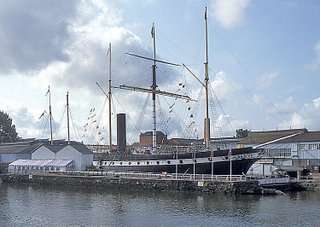The Ordinary Hero
Isambard Kingdom Brunel

Oh boy! Wished I had a name like that. They don't name babies like they used to in the past anymore. Anyway, Brunel was one of the most versatile, audacious and inspirational engineers of the 19th century. He was involved in many engineering projects in Bristol and the UK that were ahead of its time. Borned in Portsmouth on the 9th of April, 1806, he was educated at Hove, near Brighton and the Henri Quatre in Paris. He started work with his father on building the Thames Tunnel. In 1829, he designed the Clifton Suspension Bridge across the river Avon. And it is still standing today, after 177 years! A bridge originally designed to carry horse carts ..... amazing.

Bristol Temple Meads
Brunel was responsible for the growth of the modern Bristol and many of its famouse landmarks, like the Bristol Temple Meads Station. He made further improvements to the Bristol Docks in 1830. The port was given a boast when Brunel decided to build his steamships, Great Western (1837) and Great Britain (1843) in Bristol. The SS Great Britain is now a museum ship open to public down in the docks. Brunel also helped the city by building the Great Western Railway from London to Bristol in 1841. This was followed by the Bristol & Exeter Railway (1844) and the Bristol & Gloucester Railway (1844). This stimulated further economic growth and by 1861 the population of the city had increased to 154,000.

The SS Great Britain
The demise of this great man was caused by the disregard for his own health and his undying dedication to furthering the engineering field. In 1852 Brunel was employed by the Eastern Steam Navigation Company to build another steamship, the Great Eastern. The Great Eastern was extremely large and was designed to carry 4,000 passengers. Brunel faced many difficult engineering problems on this project and the strain of the work began to affect his health. While watching the Great Eastern in her trials, Brunel suffered a seizure. He died on 15th September, 1859 and was buried five days later.

The Clifton Suspension Bridge
So when you see the performances and the fireworks on the suspension bridge tomorrow, think back, and remember Brunel, the great man, the ordinary hero. Without him, Bristol just wouldn't be the same.


0 Comments:
Post a Comment
<< Home